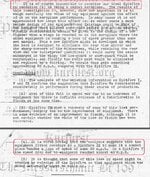Shortround6
Lieutenant General
The "effect" can be applied to just about any duct that has a heat source in it. However the effectiveness of the entire duct/heat source is rather variable.Why should not the Merredith effect be applicable to the leading-edge radiators, wing radiators, or annular radiators for example?
You are trying to do 2 things at once.
Cool the engine with a minimum of drag.
Actually create positive thrust.
You might be able to create positive thrust (speed/mass of exiting air is greater than the speed/mass of the incoming air) but if the size of the installation needed to do it increases the overall drag of the aircraft (large duct with large skin surface/skin drag) you not get the results you want.

